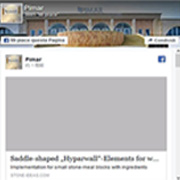How to Install F-Connectors on Coaxial Cable?

A traditional coaxial cable used to be the standard way to connect a TV to an antenna or cable access point. But they're less common these days, as HD and UHD TVs are prevalent with HDMI, optical, and Ethernet cables for many of their connections. Still, coaxial cables have their uses, and your video system will probably still use them.
Coaxial cables used to carry electrical signals to televisions or other electronic devices are terminated with F connectors. Despite the name, F-connectors are round metal barrel bits that attach to the end of a coaxial cable.
These F-connectors can be connected to the coaxial cable in a variety of ways. Professional installers use a coaxial cable stripper to strip all three layers of cable at once. They then slipped on the F-connector and secured it with a coax tool that pressed the connector onto the cable and crimped it at the same time.
What Is an F-Connector?
An F-connector is an accessory that connects a coaxial cable to an electronic device or wall jack. It contains threads that allow you to screw the cable onto your TV, wired wall outlet, or another electronic device.
If you're not a professional, you probably don't have these special tools. But you probably own (or can borrow) a basic cable crimper that will allow you to install crimp-style F-connectors. Don't have a crimper? No problem - just buy a hand-installable, spin-on F-connector.
As for stripping the cables before adding the connectors, a regular utility knife will do. Using a standard wire stripper for one of these steps will help, but you can also use a utility knife. Always handle with care to protect the inner copper cables and your fingers.
What Do You Need?
Equipment/tools
- Utility knife
- Wire strippers (optional)
- Cable crimpers (for crimp-style connectors)
Material
- Crimp or screw-in F-connector
Instruct
.
Stripping
First, use a utility knife to strip 3/4" of the black or white outer jacket from the end of the coaxial cable.
Carefully make a shallow cut around the cable, cutting only the outer jacket. Use your fingernail to peel the sheath off the cable. This exposes the thin metal shield wires and foil layers inside the jacket.
Trim Shielding Foil
Fold the shields back onto the cable jacket and trim them to about 1/8" long with wire strippers or scissors. Now, use a utility knife to cut the metal shielding foil so that it only extends about 1/4" from the cut in the cable jacket.
Trim the Plastic Layer
Use wire strippers or a utility knife to strip 1/4 inch of the white plastic insulation from around the copper core of the cable. Be careful not to cut or scratch the copper wire itself as this will affect the performance of the cable. There should now be 1/4" of bare copper wire extending from the end of the white plastic layer.
Install the Connector
This stage depends on the type of connector you use:
Crimp F-Type Connector: Slide the crimp ring of the F-Type connector over the end of the cable and slide it down over the outer jacket and shield. Slide it until the white plastic layer makes contact with the hole inside the connector. You should see about 1/4" of copper wire at the end of the F connector. Continue to the last step.
Screw-on F-connector: Install the F-connector onto the end of the cable and turn clockwise until the white plastic layer contacts the hole in the connector and the copper wire protrudes about 1/16" from the front of the connector. For twist-on connectors, your job is done.
Complete Crimp Mount (If Required)
On crimp-style F-connectors, place the jaws of the crimp tool over the crimp ring on the F-connector, and squeeze the handle of the tool to secure the connector to the cable. You are now done.
FAQ
What Is a Standard Coaxial Connector?
The F connector is a common coaxial cable connector that many people are familiar with at home. It allows you to plug in TV cables and other electronic devices.
What Are the Three Types of Coaxial Connectors?
The three main types of coaxial cable connectors are F-connectors, N-connectors, and BNC-connectors. N connectors are weatherproof and BNC connectors are small connectors for RF and video equipment.
Do Coax Connectors Degrade Signal?
Coax connectors have a small amount of signal loss that increases with the length of the connector. Also, old and degraded connectors won't transmit high-quality signals.
The above describes the steps to install the F connector on the coaxial cable, if you want to buy the F connector, please contact us.
SOMI is a professional custom antenna accessories manufacturer. We are wire connectors, CATV amplifiers, CATV splitters and splitters, satellite splitters, CATV wall sockets (terminal boxes), and other high-quality CATV system accessories, audio video connectors and A professional manufacturer of connecting cables. We have our own engineers, so we can design and produce products according to customers' requirements. All products are produced by automatic machines and fully tested to ensure the quality of our products.


